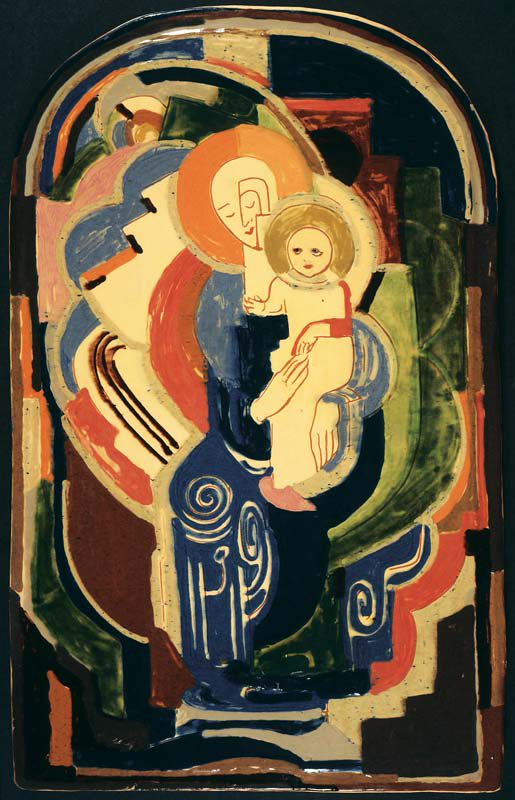We acknowledge the Traditional Owners of the land on which the Queensland Art Gallery | Gallery of Modern Art stands and recognise the creative contribution First Australians make to the art and culture of this country.
Anne DangarLa Vierge et l’enfant jesu 1934
On Display: QAG, Gallery 12
Born in Kempsey, New South Wales, Anne Dangar enrolled at Julian Ashton’s Sydney Art School in 1915, where fellow pupil Grace Crowley became a lifelong friend. In 1926, after completing their studies, the friends decided to travel to Europe to explore developments in modern art.
Most significant for Dangar was her discovery of the art and writing of cubist painter Albert Gleizes (1881–1953). Forced to return to Australia to find work, Dangar was dismayed to find little appreciation of the theories she now followed. In 1930, she accepted Gleizes’s invitation to join his community in France and immediately embraced its ideals of creativity and self-sufficiency. After the restrictions of World War Two were lifted, Dangar travelled extensively through the country, reactivating her commitment to the traditional pottery methods she hoped would be part of a revival of popular arts in both France and Australia.
